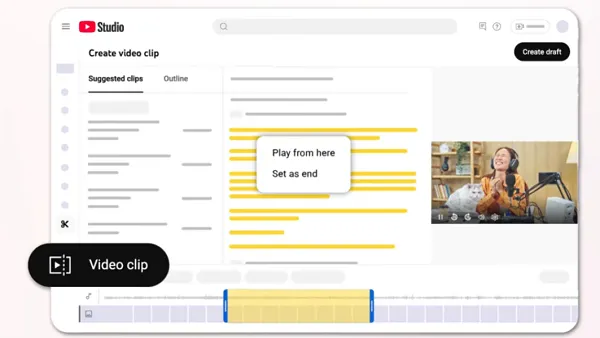Social media is a fast growing buzzword hitting businesses from all digital channels. Brands are facing a decision whether to acknowledge this channel or ignore it (which is becoming harder to do), increasingly we are seeing companies jump onto Facebook, Twitter, LinkedIn and other social networks. But are they ready to be there and do they know what they're doing there? Businesses are testing the waters of social media to best understand the long and short-term benefits, while others dive in to reap the benefits of these social communities. So what's the problem with these half-baked teams trying to make a mark in the social world? Nothing really, they can provide a presence online and voice their valuable news and opinions towards their audience...Great! However this fundamentally goes against the principles of social media. Social media means businesses have to be ready to get social with their audience and be happy to let lose the conversations they once fully owned and controlled. It means accepting the good and the bad! Allowing customers to make conversations about your brand that they believe are important, and to build relationships with you on theirterms.
However what's the value of engaging with customers who are allowed to talk about anything and everything? This is not the case, when engaging with customers on Facebook they must 'Like' your page before they are allowed to interact with you. The same goes for Twitter, people who see your tweets are the guys who 'follow' you. Therefore it's safe to say that the customer (or prospective customer) has a level of interest in you and want to hear what you have to say. We need to speak to people in a way that welcomes their participation, allowing them to understand that it is ok to converse in this space.
A case study of doing this well - Broadway Books
A small bookstore named Broadway Books in Portland, Oregon were facing financial difficulty during Christmas when they were expecting a peak of their sales. The bookstore owner Roberta Dyer was worried she may need to close the business. Her son Aaron Durand was taken back by this and decided to write a blog post. He explained the situation and offered anyone in the area who visits and purchases a book from his mum's store a free burrito. The results were astonishing, the bookstore was seeing customers its never seen before, books were flying off the shelves and the community was saving the bookstore from closure.
What did he do right?
He connected to his community at an emotional level, he was honest, he played upon the community sprit and provided an incentive. Now this is the fairytale ending to a real business problem but there are lessons to be learnt. In order to connect to his community at an emotional level he needed to understand that community, who they are, what they like, what they don't like and how to talk to them. He was honest, honesty is really important and a single lie can seriously damage the reputation of a brand. John Griffin the CEO of Addison Lee made a statement to Sky News highlighting that his business has grown from strength to strength by being honest 'people will forgive the truth but they'll never forgive a lie'. This concoction of honesty, community sprit and incentive all played upon the success of this campaign.
A case study of doing this badly - Skittles
Skittles took a brave move by transforming their main.com website into a social media campaign. The aim of this campaign was not entirely clear. Skittles allowed their audience to tweet whatever they wanted about the different colours of Skittles. The more tweets about a specific colour would push the Skittle colour up the rankings and be published on the site.
What did Skittles do wrong?
Although this sounds like a great idea and 'a dream project' for many digital agencies Skittles didn't put in place any management precautions to allow them to manage negative feedback, not even basic fowl language filters! From an external perspective it seemed like Skittles had fully handed over ownership of their site to their audience. If Skittles had more control over this campaign they would have had the opportunity to participate in 'their' conversation and create processes to manage negative comments.
Another contributing factor is the tone of voice / language used on the campaign page. Skittles adopted a blunt, cold, slang approach, setting the stage for the audience to believe it was acceptable to converse in such a way e.g. 'Don't get cocky' (written by Skittles on their campaign site) which could have led to the type of response they were receiving. It's not entirely clear what was the social strategy was for this campaign. If it was to increase visitors to their site the tweets may have lead to a rise in links to them however the campaign itself had little to no content therefore removing any SEO value. Maybe the value was to increase digital conversations with their audience? If it was only for an increase in metrics this campaign would have been considered a wide success! However in reality most of the conversations were negative and had low sentiment (at least not enough for me to change my purchasing habits from M&M's to Skittles).
It has to been handed to Skittles, although the campaign wasn't an obvious success, their bravery to become a socially engaged brand has to be respected. They made some obvious errors and could have targeted their campaign better for greater results. The management was poor and opportunities were lost, but hey we all hope they learnt from their mistakes.
A case study of not doing anything (till its too late) - Domino's Pizza
Domino's pizza was in a media frenzy when two of their employees took pictures of themselves spitting into customers food, taunting customers behind their backs and even having a bath in the large Domino's pizza kitchen sink. Once these photos and videos hit Facebook they went viral and were posted on peoples walls all over the USA (and way further). The news eventually went across the nation and was even broadcasted on TV news. Very quickly the customer community up-roared regarding this issue and forced Domino's Pizza to close their store. The employees involved in the incident were later sentenced to a jail term. The USA president of Domino's Pizza made an apology and took full responsibility, view the apology video on the link above.
What did Domino's do wrong?
Domino's Pizza were not monitoring their brand perception across social networks, not measuring sentiment nor the trends for what people were watching or talking about regarding Domino's Pizza. They did not monitor their staff nor regulate the use of social media (or socially connected devices). They also missed the opportunity to connect to the upset users who were viewing the photos and videos posted by the rouge employees. Domino's Pizza held a helpless position where they did not speak or listen to the social communities who were upset by the behaviour of their staff. The outcome of this incident proves howimportant it is not to do anything. These problems don't go away in a world of connected broadcasters!
Social media is being used to empower the individual, bringing their thoughts, ideas and concepts to the front of the discussion. Its important we do not become passive to their views or respond like a robot. The value of social media comes from the closeness of the conversation and conversing through technology as humans. Its important we never forget this fact and implement processes and technologies that support organizations to behave in such a way.
http://www.youtube.com/watch?v=s-gvs2Y2368&feature=related
About the author
Gurmit Singh Shakhon is an enthusiastic and experienced digital professional in the fields of experience strategy, social strategy and interaction design. Gurmit has worked in some of the worlds leading digital agencies and been part of market shifting projects. Gurmit has also worked alongside some of the most intelligent minds in the industry including Don Norman, Brett King and Martin Lindstrom.
Gurmit is a partner at Esporis.com promoting the creation of highly creative social solutions across the UK and Australia.
By Gurmit Singh Shakhon, partner at http://www.esporis.com












